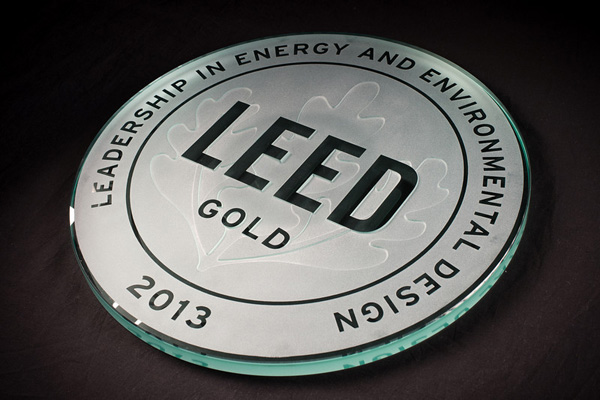We have often heard of a building being “LEED certified” but what does that actually mean? LEED stands for Leadership in Energy and Environmental Design and is the most widely used green building rating system in the world. The program was established by the U.S. Green Building Council (USGBC). LEED is for all building types and all building phases including new construction, interior fit outs, operations and maintenance and core and shell. There is a system catering to each type of project.
Projects earn points based on how they address carbon, energy, water, waste, transportation, materials, health and indoor environmental quality. Projects go through a verification and review process by Green Business Certification Inc. (GBCI) and are awarded points that correspond to a level of LEED certification: Certified (40-49 points), Silver (50-59 points), Gold (60-79 points) and Platinum (80+ points).
Three buildings on campus are officially LEED certified. The Saunders Research Building and O’Brien Hall achieved LEED Gold Certification in 2012 and 2013 respectively. Genesee Hall achieved LEED Silver Certification. The Raymond F. LeChase building is also built according to LEED standards. Some sustainable features of these buildings are as follows:
- High efficiency HVAC systems
- Exhaust heat recovery systems
- A highly reflective white roof and a vegetative “green” roof help to cool the building in the summer, minimize “urban heat island” effect, and reduce the amount of energy used for heating
- Daylight harvesting ie. maximizing exposure to sunlight and using sensors that measure the amount of daylight in a room and adjust lighting levels accordingly
- Efficient plumbing fixtures such as dual flush toilets and sensor controlled faucets
- Materials used in constructing the building are below LEED-required volatile organic compound (VOC) limits
- Construction materials that were either regional (within 500 miles) or made from recycled materials
These buildings contain many more sustainable features. Take a tour of these buildings and see if you can spot more features. You can tour these buildings on campus anytime!
Just like how buildings can become LEED Certified, people can also become LEED accredited. Being a LEED Green Associate is a good way to break into the sustainability space. It also shows employers and clients you have certified knowledge in the field. You can enroll in an online workshop which can help you prepare for the LEED GA exam.
Written by Hanyia Ahmed, Class of 2022

